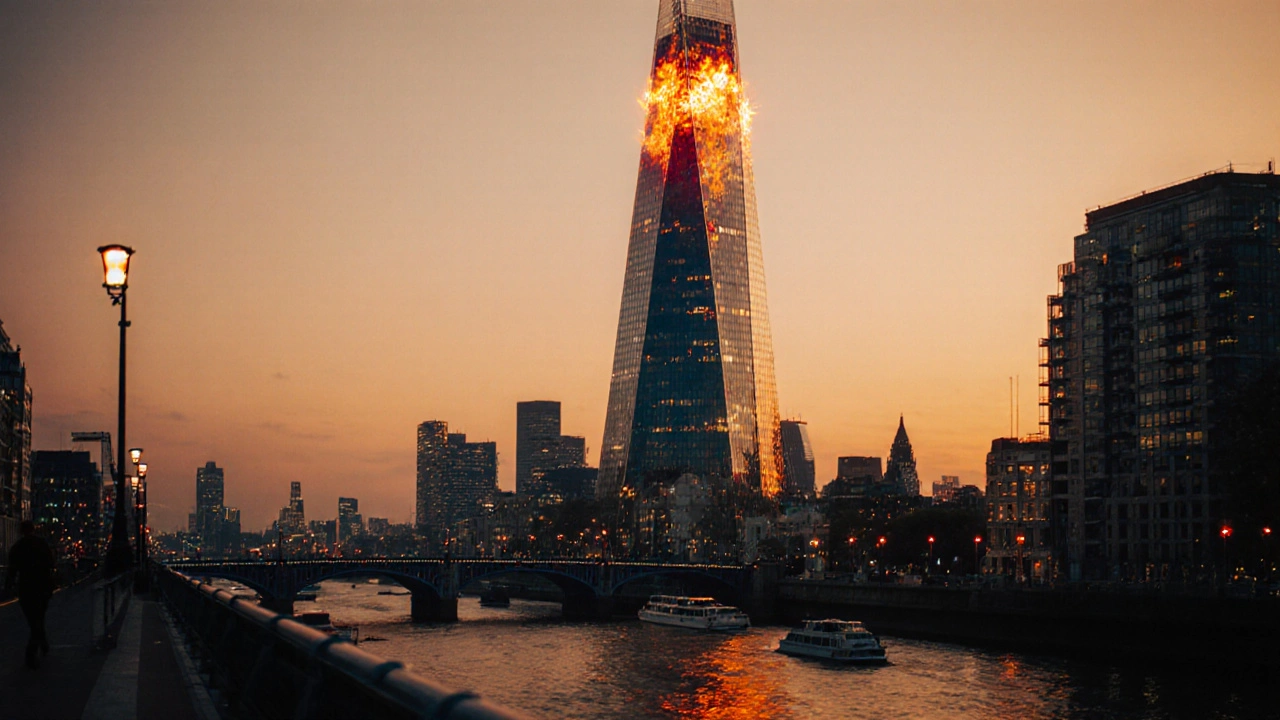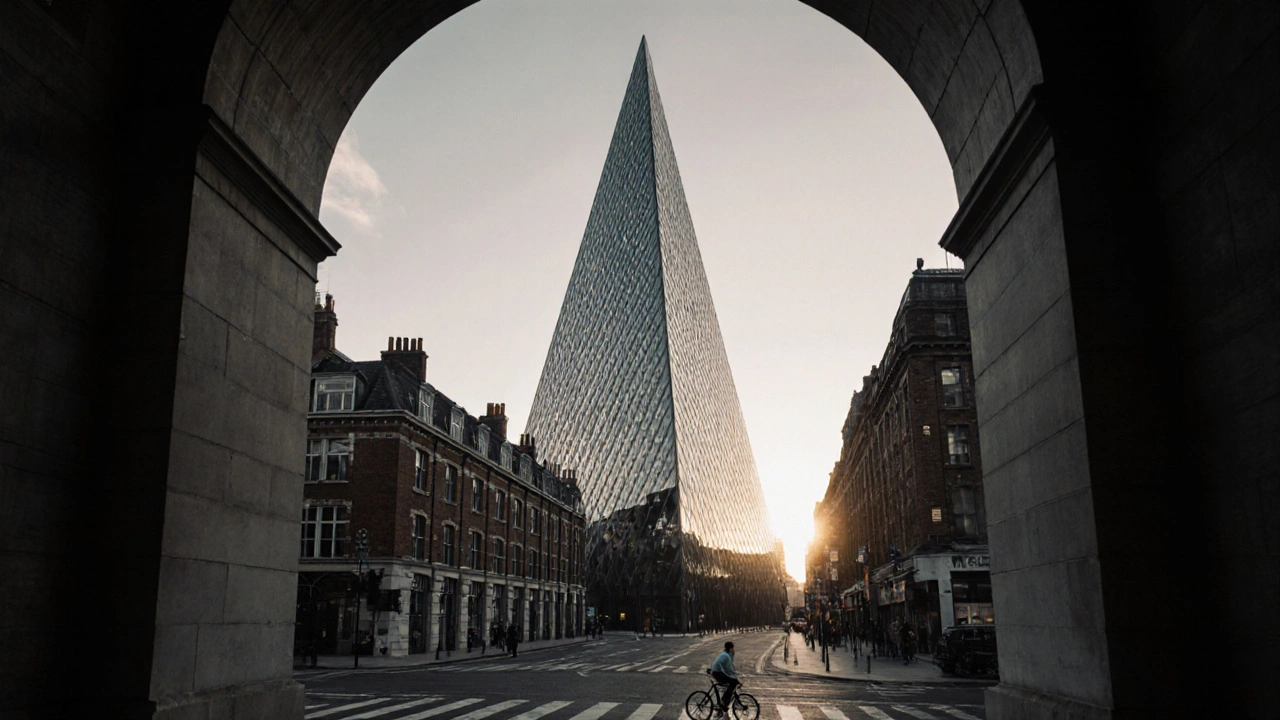
Walk down any street in the City of London and you’ll see glass towers rising like frozen waves, their surfaces catching the sky in perfect, twisted reflections. These aren’t just offices-they’re photo magnets. Every day, hundreds of people with phones in hand stand on street corners, tilting their cameras up, waiting for the right light to capture the Gherkin, the Walkie Talkie, or the Cheesegrater at their most dramatic.
Why the City of London Looks Like a Sci-Fi Movie Set
The City of London didn’t always look like this. Before the 1980s, it was mostly low-rise buildings, damaged by bombs in WWII, then patched up with dull concrete. But after financial deregulation in the 1980s, global banks moved in fast. They wanted buildings that screamed power, innovation, and wealth. Architects responded with bold shapes and reflective surfaces that turned the skyline into a mirror maze.
Today, the skyline is a collection of architectural personalities. Each tower has a nickname, a shape, and a story. And each one is a different kind of Instagram moment.
The Gherkin: The Classic Reflection Shot
Officially called 30 St Mary Axe, everyone calls it the Gherkin. It’s the one with the curved, tapered body that looks like a pickle made of glass and steel. It was finished in 2004 and instantly became the most photographed building in the City.
For the best shot, go to the corner of Aldersgate Street and Gresham Street just after sunrise. The morning light hits the lower curve just right, and the building reflects the sky in a smooth gradient. If you’re lucky, the clouds will be low and soft, turning the Gherkin into a glowing orb. No filters needed.
Pro tip: Bring a polarizing filter. It cuts glare and makes the reflections pop without washing out the sky. Many photographers miss this, and their photos end up looking flat and washed out.
The Walkie Talkie: Where the Sky Burns
The 20 Fenchurch Street building-nicknamed the Walkie Talkie for its bulky top and narrow base-has a reputation. In 2013, its curved glass facade focused sunlight so intensely it melted cars, set fire to a shop’s carpet, and even cooked eggs on a sidewalk. They had to install a sunshade in 2014 to fix it.
Now, it’s one of the best places for dramatic evening shots. Head to the Sky Garden (free, but you need to book weeks ahead) for a 360-degree view. But if you want the classic Instagram shot, stand on the pedestrian bridge over the River Thames near London Bridge. The building’s top reflects the sunset in a fiery orange glow, and the glass walls mirror the city lights below. It looks like the building is on fire.
Best time: 45 minutes before sunset. Cloud cover helps. A clear sky gives you a boring orange. A few scattered clouds turn it into a painting.
The Cheesegrater: Sharp Lines, Strong Shadows
The Leadenhall Building, or the Cheesegrater, is all angles. It’s shaped like a wedge of cheese because of planning rules that protected the view of St. Paul’s Cathedral. The result? A building that slopes from 48 stories down to 12, like a giant knife slicing the sky.
For the best photo, go to the north side of Leadenhall Street, near the Royal Exchange. The morning sun casts long, clean shadows along its slanted sides. The contrast between light and dark is sharp, making the building look like it’s carved from metal. Shoot low to the ground to exaggerate the height.
Don’t stand too close. You’ll lose the shape. The magic happens when you’re far enough to see the whole wedge, with the old brick buildings of the City in the foreground. It’s a perfect blend of old and new.

The Shard: The View From Above
It’s not in the City of London-it’s just south of it-but no list of London Instagram spots is complete without The Shard. At 310 meters, it’s the tallest building in the UK. And from its observation deck, you can see every other skyscraper in the City, laid out like toy blocks.
Go at golden hour. The light hits the Gherkin, the Walkie Talkie, and the Cheesegrater all at once, turning them into glowing beacons. The River Thames reflects the sky, and the whole scene looks like a digital rendering. The best angle? Stand at the southeast corner of the viewing platform. You’ll get the full skyline with Tower Bridge in the foreground.
Bring a tripod. The light fades fast, and you’ll need at least a 2-second exposure to capture the city lights without blur.
Hidden Gems: Where the Locals Shoot
Most tourists stick to the main spots. But the real Instagram pros know the quiet corners.
- Barbican Estate: The brutalist concrete walkways here create perfect leading lines that point straight to the Gherkin. Shoot from the top of the stairs near the Museum of London. The contrast between raw concrete and sleek glass is stunning.
- Leadenhall Market: This 19th-century covered market has a glass roof and ironwork. Stand under the arches and shoot upward. The modern towers loom above, framed by old stone and stained glass.
- Bank Junction: The intersection of Threadneedle Street and Lothbury is where the Walkie Talkie, the Cheesegrater, and the Gherkin all appear in one frame. Use a wide-angle lens. The traffic lights and black cabs add life to the shot.
What to Bring and When to Go
Instagram-worthy shots in the City of London aren’t about luck. They’re about timing and gear.
- Best seasons: Spring (March-May) and autumn (September-November). The light is softer, and the skies are clearer. Summer brings haze. Winter brings fog.
- Best times: Sunrise and sunset. The golden hour lasts about 45 minutes. Blue hour (just after sunset) gives you deep blue skies with warm building lights.
- Essential gear: A wide-angle lens (16-35mm), a tripod for low-light shots, a polarizing filter, and a phone with manual mode if you’re not using a camera.
- Don’t forget: Comfortable shoes. You’ll walk 5-8 miles in a day. And a power bank. You’ll drain your phone fast.

What Not to Do
Everyone tries to take the same shot. Here’s how to avoid looking like a tourist.
- Don’t stand in the middle of the road. You’ll get ticketed. Use sidewalks and public plazas.
- Don’t use auto mode. The buildings’ reflective surfaces fool your phone’s meter. Use exposure compensation or manual mode to darken the shot slightly.
- Don’t crop too tight. The architecture is about scale. Show the building in context-with streets, people, or trees.
- Don’t ignore the weather. Rain makes glass shine. Mist turns the skyline into a dream. A cloudy day is better than a bright one for reflections.
Why This Matters Beyond Instagram
These buildings aren’t just pretty backdrops. They’re symbols of how money, power, and design collided in the last 40 years. The Gherkin was designed to be energy-efficient, with a natural ventilation system. The Walkie Talkie’s shape was meant to reduce wind turbulence. The Cheesegrater was built to preserve a historic view.
When you take a photo of them, you’re not just capturing glass and steel. You’re capturing a city that reinvented itself-over and over-because it had to. And now, it’s one of the most photographed skylines in the world.
What’s the best time of day to photograph the Gherkin for Instagram?
The best time is just after sunrise, between 6:30 and 7:30 AM in spring and autumn. The light hits the lower curve at a low angle, creating a smooth gradient of color across the glass. Avoid midday-direct sunlight washes out the reflections.
Can I take photos inside the Sky Garden at the Walkie Talkie?
Yes, you can take photos inside the Sky Garden, and it’s one of the best spots in London for panoramic shots. But you must book a free timed entry slot weeks in advance. No tripods or professional equipment are allowed. Phones and small cameras are fine.
Is it legal to use a tripod on public streets in the City of London?
Yes, you can use a tripod on public sidewalks as long as you’re not blocking foot traffic. The City of London Police don’t require permits for casual photography. But if you’re using a large setup or filming for commercial purposes, you’ll need permission from the City of London Corporation.
Which building reflects the most at sunset?
The Walkie Talkie (20 Fenchurch Street) reflects the most at sunset. Its curved glass surface acts like a giant lens, catching the last rays of the sun and bouncing them across the Thames. The reflection is so strong it can be seen from miles away.
Are there any free viewpoints in the City of London?
Yes. The Sky Garden at the Walkie Talkie is free with booking. The viewing area at the top of the Monument to the Great Fire of London costs £5 and offers a 360-degree view of the City skyline. Also, the public plaza at 125 London Wall gives you a clear view of the Cheesegrater without paying anything.
Where to Go Next
If you’ve nailed the City of London skyline, head to Canary Wharf for a completely different vibe. The towers there are taller, colder, and more uniform-like a corporate dream. Or walk east to Wapping and shoot the skyline from the riverbank. The old warehouses and cranes add grit to the glass.
Or just come back at night. When the lights turn on, the City becomes a constellation of reflections. You’ll see the same buildings-but now they’re glowing, alive, and totally different.